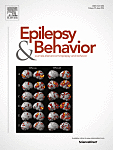Is Texting Changing The Way Your Brain Works? – The ‘Book Mystique
Texting and tweeting and Facebook social media culture has changed people’s behavior — in many respects not for the better. A new Nielsen Company audience report released last week says American adults over the age of 18 now typically spend almost 11 hours daily, and younger teens nine hours per day, using media devices including smartphones, tablets, personal computers, multimedia devices, video games, radios, DVDs, DVRs and TVs. That’s up one hour per day from the company’s 2015 survey finding, with the increase attributed mainly to more smartphone and tablet usage, the report noting that of the “new technologies,” smartphones have the largest reach. Given that most people sleep six to eight hours out of 24, that leaves some five to seven hours wake time for doing everything else.
Aside from increasingly hogging our time and squeezing out real-world activities like exercise and face-to-face human interactions, according to a new study published in the scientific journal Epilepsy & Behavior there is now evidence that sending text messages on a smartphone or tablet can actually change the rhythm of a user’s brain waves.
The report describes how a team of researchers led by William Tatum, a professor of neurology and director of the epilepsy monitoring unit and epilepsy center at the Mayo Clinic in Jacksonville, Florida, analyzed data from 129 patients to learn more about how our brains work during textual communications using smartphones or other portable devices. The subjects’ brain waves were monitored over a 16-month period using electroencephalograms (EEGs) combined with video footage. The researchers observed a unique texting rhythm in approximately one in five participant subjects using smartphones to text message while having their brain waves monitored.
The researchers asked study subjects to perform various activities such as message texting, finger tapping and audio cellular telephone use, in addition to testing attention and cognitive function. Only text messaging produced the newly observed brain rhythm, which was different than any previously described brain rhythm, and was only present during active text messaging with a smartphone as opposed to during passive and forced audio telephone use. In addition to smartphones, the texting rhythm was also observed in iPad users.
No correlation was found between the presence of a texting rhythm and subject demographics such as age, gender, epilepsy type, presence of a brain lesion on MRI, or ictal EEG. “We believe this new rhythm is an objective metric of the brain’s ability to process non-verbal information during use of electronic devices and that it is heavily connected to a widely distributed network augmented by attention or emotion,” Dr. Tatum comments in a Science Direct release. “This finding could have significant implications for brain-computer interfacing, gaming, and, perhaps most importantly, driving, Dr. Tatum continues: “There is now a biological reason why people shouldn’t text and drive — texting can change brain waves. While there is still a lot more research needed, we have begun to unravel the responses generated by the brain when it interfaces with computerized devices.”
 The journal paper, entitled “Cortical processing during smartphone text messaging” (Epilepsy & Behavior Volume 59, June 2016, Pages 117–121, doi:10.1016/j.yebeh.2016.03.018) coauthored by Dr. Tatem with Benedetto DiCiaccio of the University of Florida, Gainesville, and Kirsten H. Yelvington of the Mayo Clinic College of Medicine Department of Neurology, notes that while smartphones and personal electronic devices (PEDs) are now a ubiquitous part of society, involving a wide range of social, work-related, and recreational functions and people communicate increasingly via text messaging, little is known about the the effects of personal electronic devices on the brain.
The journal paper, entitled “Cortical processing during smartphone text messaging” (Epilepsy & Behavior Volume 59, June 2016, Pages 117–121, doi:10.1016/j.yebeh.2016.03.018) coauthored by Dr. Tatem with Benedetto DiCiaccio of the University of Florida, Gainesville, and Kirsten H. Yelvington of the Mayo Clinic College of Medicine Department of Neurology, notes that while smartphones and personal electronic devices (PEDs) are now a ubiquitous part of society, involving a wide range of social, work-related, and recreational functions and people communicate increasingly via text messaging, little is known about the the effects of personal electronic devices on the brain.
The investigators hypothesize that their study’s discovery of a reproducible texting rhythm (TR) likely reflects a combination of increased attention coupled with a heightened affective influence while sending smartphone text messages, which may have implications for industry and health care research in nonverbal communication. They conclude that their results suggest that the TR on scalp EEG represents a novel technology-specific neurophysiological alteration of brain networks, and propose that cortical processing in the contemporary brain is uniquely activated by use of personal electronic devices.
Personally, I steer clear of social media except for work-related communication with colleagues and editors, but clicking links is seductive, and I lament how much electronic devices and the Internet have crowded out my own quality reading time, making me profoundly thankful for the amount of serious reading I did prior to the Internet era. I also used to conduct multiple correspondences — longhand and through postal lettermail — alas another enjoyable and fulfilling element of life that’s been rendered essentially extinct by the immediacy of email and texting.
The way I absorb information and ideas has changed as well. It isn’t that there’s no content worth reading to be found online — quite the contrary. It’s like drinking from a firehose. However, I find that reading off electronic device screens is not conducive to the contemplative focus and reflection one can achieve reading ink-on-paper pages without the distractions of links and notifications. It’s just hard to transition back to that space.
I don’t know whether that change has anything to the TR discovered by Dr. Tatem and his team. I suspect not. But it wouldn’t surprise me to learn that my brain processes have been altered by two decades of Internet use.
